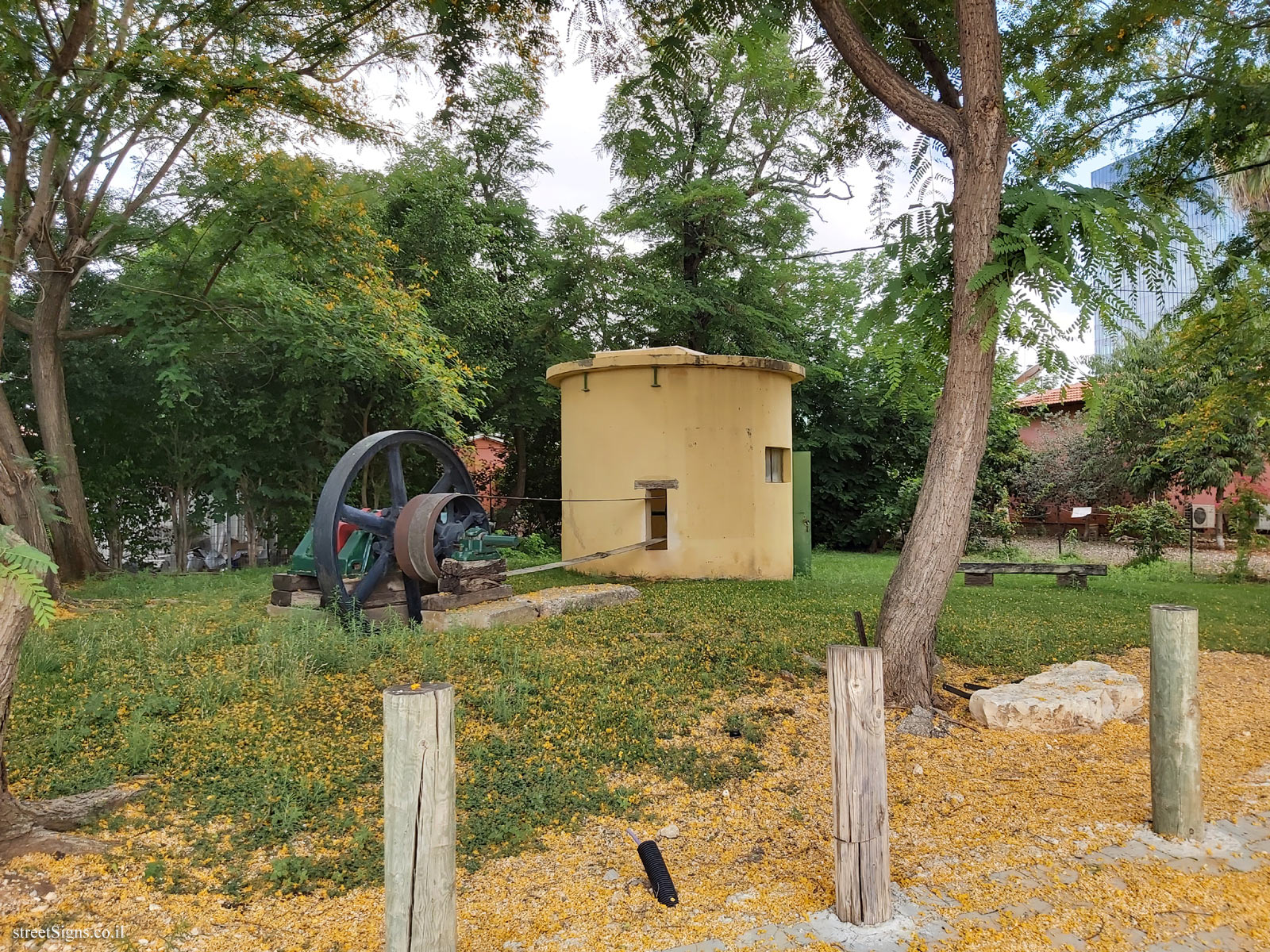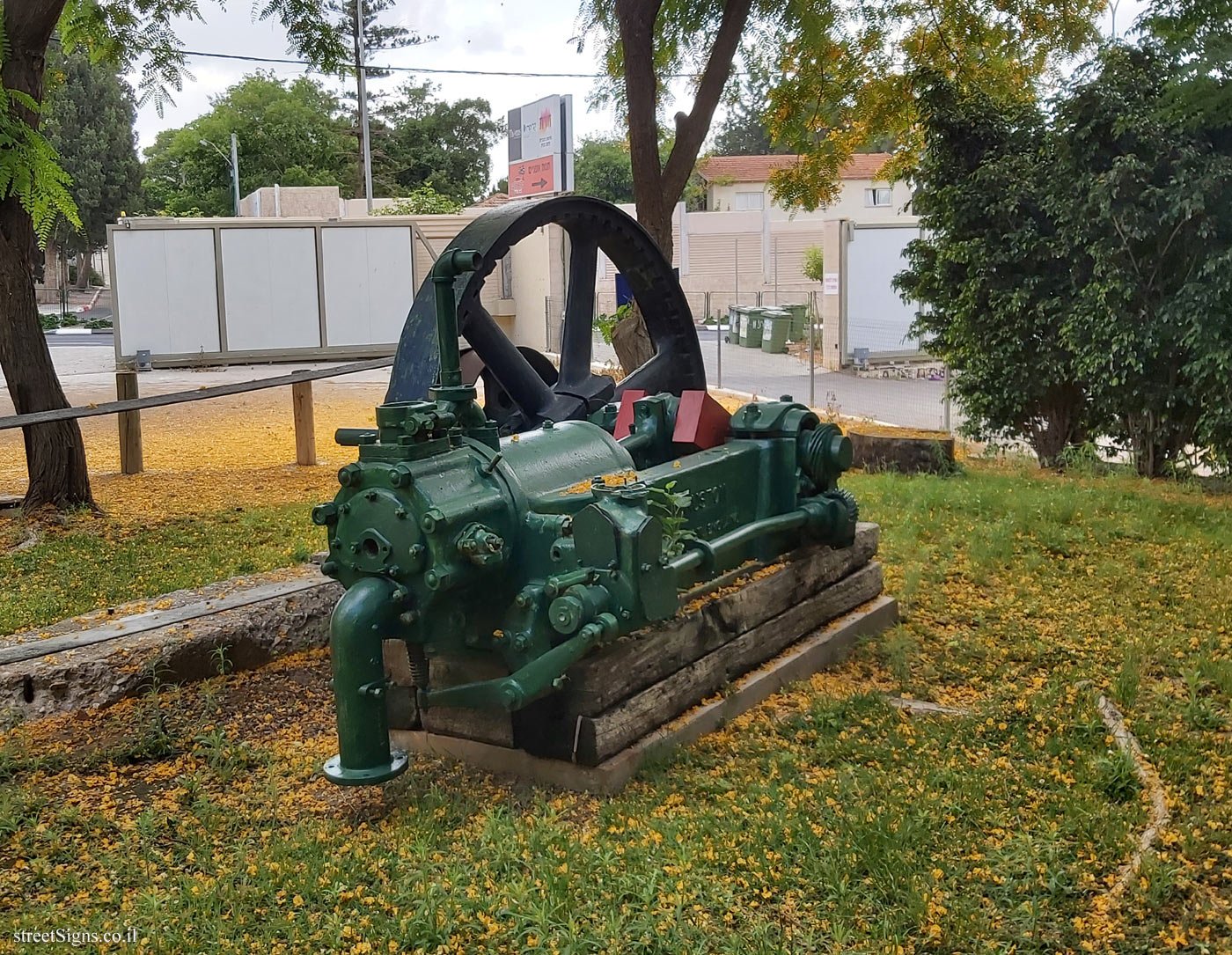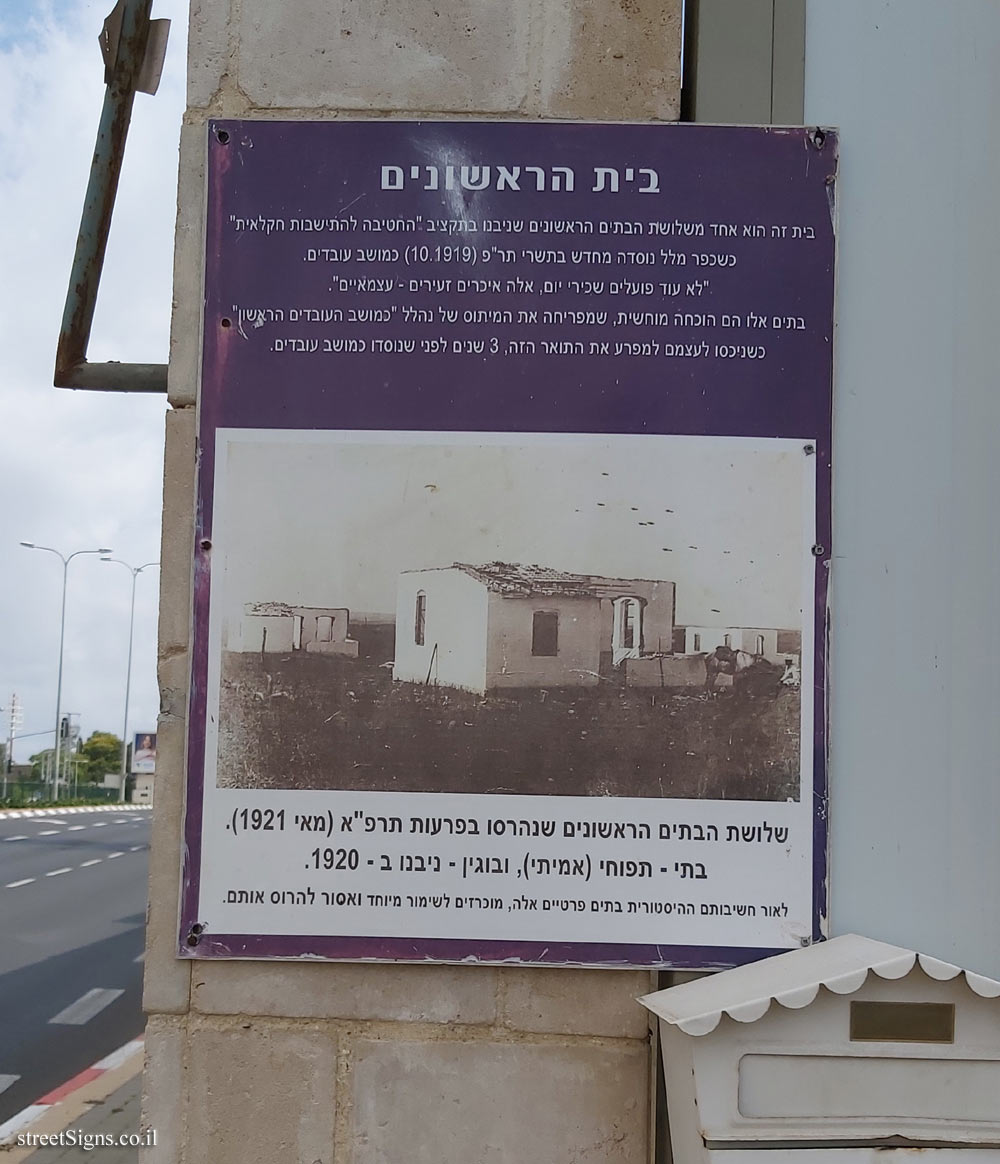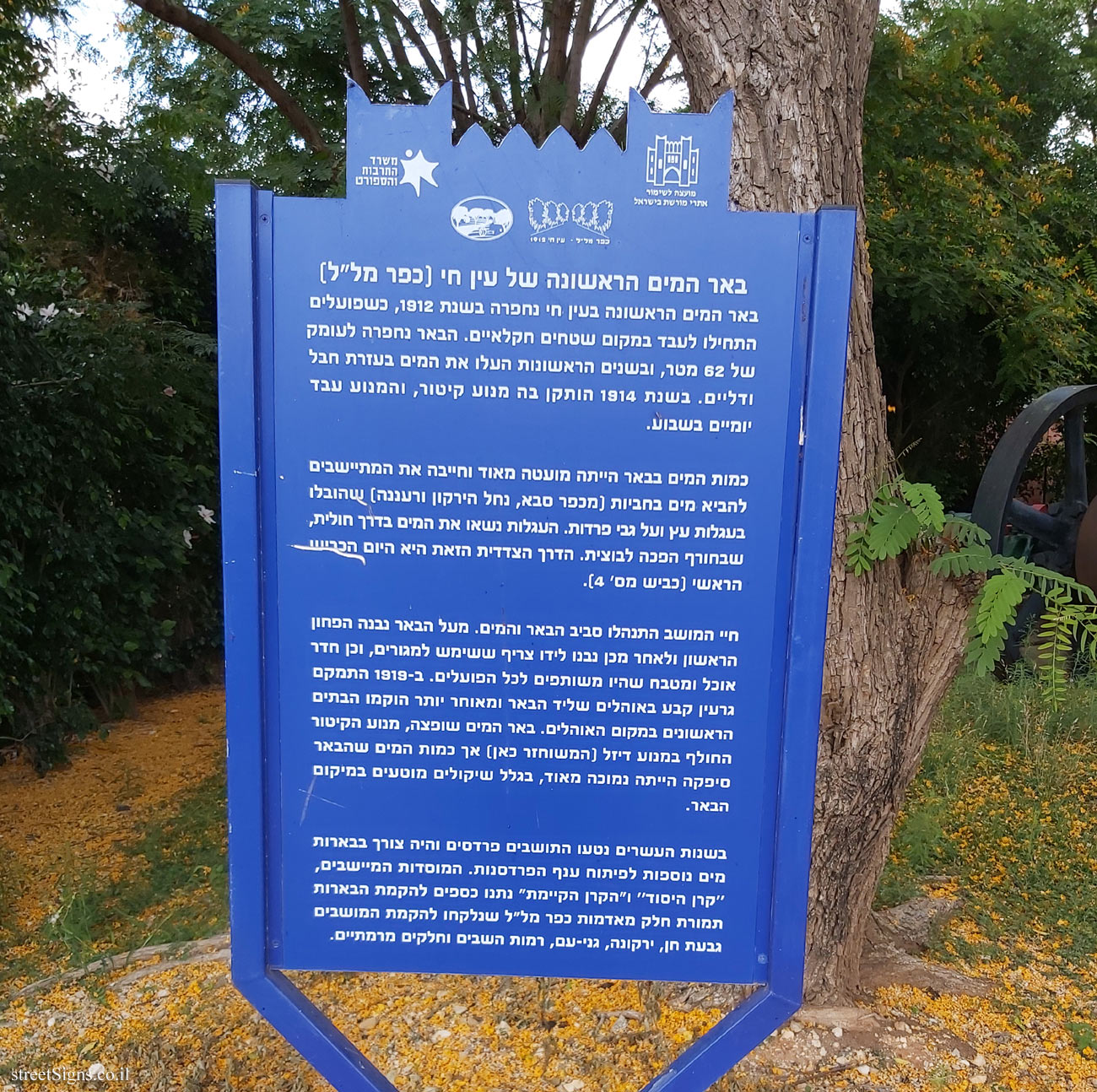The well was photographed that day
 Click for a larger image
Click for a larger image The engine indicated on the sign is in the following image
 Click for a larger image
Click for a larger image This sign also indicates the fact that Kfar Malal is the first moshav (and not Nahalal) just as it is indicated on another sign located in the moshav
 Click for sign's details
Click for sign's details The well is also defined as a heritage site in Israel
 Click for sign's details Translation of the text on the sign
Click for sign's details Translation of the text on the sign:
The first water well of Kfar Malal - 1912 In May 1912, the land of Ein Hai was purchased from the Abu Kishk tribe by the Jews of Odessa from the Hovevei Zion movement and the Israel Land Development Company.
One of the leaders of the movement was Moshe Leib Lilienblum - after whom Moshav Kfar Malal is named.
In the same year this water well was excavated - (to a depth of 62 m)
90 years ago !!!
In the early years they raised the water with the help of a rope and buckets. Only at the end of the Turkish rule was a
steam engine (which was very rare then) the engine worked two days a week due to a shortage of coal. The amount of water produced was very small and required
to bring water in barrels, in wooden carts and mules that traveled on a sandy road that became muddy in winter. This is the back road that has become the main road.
Around the well and the water all life in the village took place: near the well the first hut was built and then the hut which also served as a shared kitchen and dining room (the money was also shared).
In 1919, the first three houses were built - also near the well (the council building, Beit Bogin and Beit Amitai).
During the riots of 1921, the place was abandoned (for the second time), the houses were looted and badly damaged (as well as 12 houses in Kfar Saba) and these were restored prior to the return of the settlers in 1922 by renewed forces.
40 settlers organized as a workers’ moshav as the other moshavim and kibbutzim that began to be established then.
The settlers "gave up" on buying the land due to lack of economic capacity (42 cents per dunam - which was a zero price even then) and the land was sold to the JNF in 1922.
The settlers’ houses were erected slowly - tents, barracks and houses. Only then did they allow themselves to establish their families.
With the advancement of technology and the transition to diesel engines (like the restored engine here) and then to electric motors (in the 1930s) agriculture became intensive and the orchards were planted.
From the 1950s, the well building served as a weapons room.
In 1914, the first water pool was built in an ancient and rare oak grove, located 100 m west of the well.
The transition to intensive agriculture "enabled" the settler institutions to demand and expropriate from the village considerable areas (thousands of dunams) in favor of the "millennial settlement" for the purpose of establishing the moshavim: Yarkona, Ganei Am, Givat Hen, Ramot Hashavim and large parts of Ramatim.
In 1928 the moshav was expanded by 16 more families. The moshav and the settlers also did not receive any support, additional land or means of production, although these settlers (who came from Jidro) invested a lot of money in the JNF that they did not receive back.
It is unbelievable that throughout this long period, wars, disturbances, feverish diseases, malaria and fleas, terrible poverty, lack of agricultural knowledge, lack of help and cynicism, lack of water and impossible housing,
the people were partly happy.
And the reason is: they had an ideology: Zionism and settlement in the Land of Israel.
Therefore most of the families persevered and remained in the village, also settlers from 1912-1919.
Here is a comment:
1. Kfar Melal is the first moshav established in Israel: and not Nahalal, which was established in 1921
2. The best known person from Kfar Melal is Arik Sharon, (born to Vera and Shmuel Sheinerman).
3. The mechanic of the well - Yitzhak Kibowitz was "caught" in the engine belt in an attempt to start the engine and was killed in 1925.
Learn about:

 Click for a larger image
Click for a larger image  Click for a larger image
Click for a larger image  Click for sign's details
Click for sign's details  Click for sign's details
Click for sign's details